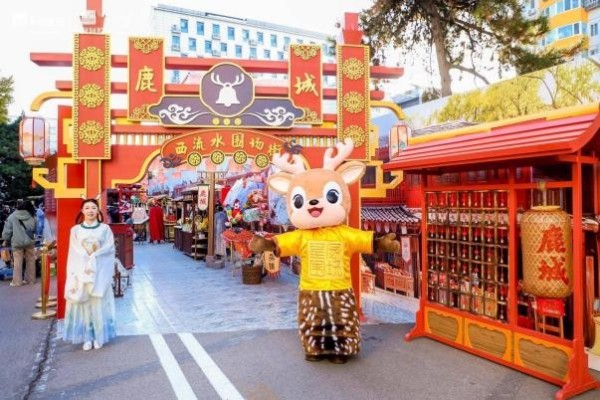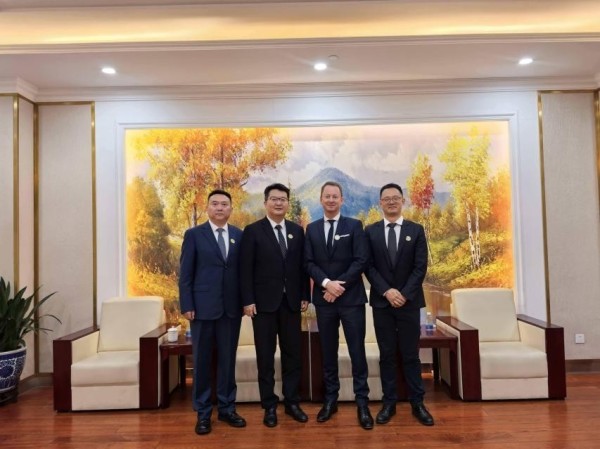Nov 28, 2025

By Damon Paling, DINZ Trade and Strategy Manager
Earlier this month, I was in Beijing to attend the Xifeng Deer Industry Promotion Conference — a major national gathering held at the Xi Guo Mao Hotel and the CCTV Agricultural Film Centre. More than 500 participants attended, including central ministry officials, provincial leaders from Liaoning, party secretaries and mayors from Tieling and Xifeng, senior executives from the private sector, national TCM scholars, and representatives from deer-producing communities.
While the conference bears the Xifeng name, hosting it in the capital was a strategic signal: this is an industry that Beijing wants to shape, coordinate, and elevate.
A recurring narrative throughout the event connected Liaoning Province — and the Tieling/Xifeng region in particular — to China’s imperial past. During the Ming (1368–1644) and Qing (1644–1912) dynasties, this area supplied deer to the royal court. Speakers described this region as the “birthplace” and “spiritual home” of China’s deer heritage. In China’s current political climate, where the New Era is built on both cultural confidence and modernisation, this kind of historical anchoring carries real influence. Velvet is not positioned simply as an agricultural commodity, but as part of a lineage China seeks to revitalise and share with the world.
This year marks the final year of China’s 14th Five-Year Plan (2021–2025), and many presenters noted that the deer industry’s direction aligns with priorities expected to continue into the 15th Plan, now under preparation. The long-term agenda — strengthening TCM, improving rural livelihoods, achieving higher-quality economic growth, and delivering on Healthy China 2030 — all point to continuity rather than change. For New Zealand, that consistency matters: it signals that engagement in China’s velvet ecosystem must be viewed through a multi-decade lens.
China’s domestic industry is strengthening and seeking standards
Across the two days, Chinese officials and experts were unusually candid about structural challenges at home. Breeding practices vary widely, and several speakers acknowledged the need for more standardised genetics, herd management, and welfare systems. Ecological management — especially in the Northeast — was also highlighted as a priority, with some counties facing pressure to balance economic opportunity with environmental stewardship.
A repeated message was the need for better enterprise-level standards, including more consistent grading, and clearer verification systems across the velvet value chain. Importantly, there was strong recognition that China must refine velvet’s regulatory classification — moving it from a basic “agricultural product” toward categories such as health foods, functional supplements, and modern TCM formulations. These categories hold far higher commercial value but require more robust science, traceability, and regulatory alignment.
Officials noted that grading variation, opaque procurement, and inconsistent market information have held back the category. In this context, academics cited New Zealand as a benchmark industry: our traceability systems, breeding practices, animal husbandry standards, and regulatory integrity were referenced as best-in-class models. This creates a strong reputational platform — but one we must use carefully and strategically.
Traditional Chinese medicine as soft power
Another noteworthy theme was China’s expanding ambition to take TCM beyond its borders. TCM is increasingly framed as part of China’s soft-power outreach, woven into diplomacy, hospital partnerships, and pharmaceutical cooperation in Asia, the Middle East, and Europe. Leading Chinese companies appear to be positioning themselves as global ambassadors for “modern TCM”, blending tradition, science, and export-ready branding.
New Zealand velvet and co-products sit comfortably within that narrative. As Chinese firms internationalise, they want credible, safe, and premium-sourced raw materials that can support cross-border regulatory approvals and global consumer acceptance. Some speakers made the point that China will need both domestic and imported velvet to scale its international ambitions. This bodes well for New Zealand — provided we maintain visibility and remain inside the ecosystem China is designing.
The role of SOEs and the need for balance
Informal discussion during the conference underscored the important roles that China’s state-owned enterprises (SOEs) play in shaping the future of the deer industry. SOEs such as China Resources and Dong’e E-jiao operate with long planning horizons, strong political endorsement, and national distribution reach. They are often the most effective partners for regulatory reform, scientific validation, and aligning with central government policy.

DINZ representatives Damon Paling (second from right) and Felix Shen (right) met with representatives from Dong'e E-jiao, including Chairman Chen Jie (second from left).
At the same time, China is far too vast and diverse for any single model to dominate. In the south — especially in Guangdong — private enterprises drive fast-paced product innovation, agile marketing, and deep consumer engagement. TCM is woven into daily life in Guangdong in a way that should fuel rapid market adoption.
For New Zealand, the opportunity is not to choose one approach over the other, but to build a China strategy that works across both systems, such as by working with SOEs to shape the long-term regulatory and scientific foundations; and attaching our velvet to heroic consumer brands while also partnering with private-sector leaders in the South to generate consumer pull, brand energy, and commercial velocity. Both are essential parts of the landscape, and New Zealand needs to be active in each if we are to fully participate in China’s next decade of velvet development.
Deer’s digital future
The conference also announced a new national deer coalition spanning 25 cities. While politically important, it was notable that several well-known industry leaders and trading firms were absent from the governing committee — a reminder of the complex institutional landscape China’s deer sector operates within.
The launch of the Deer Connection (DPOP) app — now integrated within WeChat — reflects China’s push toward digitalisation. In theory, it hosts more than 4,000 farmers and 500 companies, provides regulatory updates, includes cultural and educational content, and offers early-stage traceability for deer products.
Playing the long game together
From Beijing’s disciplined New Era banquet halls to Xifeng’s imperial legacy, and from Five-Year Plan continuity to SOE ambition, the message was consistent: China sees the deer sector as a strategic, long-term industry tied to rural revitalisation, TCM modernisation, Healthy China 2030, and global soft-power outreach.
For New Zealand, the implications are clear. We need a Chinese champion — likely an SOE or a major national TCM brand — to advocate for regulatory pathways within China that recognise our velvet as comparable to sika and suitable for preferred therapeutic claims and sales channels. We can also simultaneously build partnerships in southern China where private innovation and consumer adoption run fastest. And above all, we must stay engaged in the scientific, cultural, and regulatory processes that shape China’s next decade development.
Notably, several of the Dalian- and Xifeng-based traders and processors that New Zealand companies work with today were absent — a reminder of both the political dynamics and the practical realities of peak-season operations, and a signal that Beijing’s forward-looking vision will need time to settle alongside the interests, legacy investments, and business models of local cadres, leaving much still to play for in the years ahead.
China is designing the future of its deer industry — and expects its partners to take a decade-long view. For New Zealand, the path is straightforward: stay present, stay involved, and keep building the demand curve that supports strong prices and sustainable returns at the farm gate.

